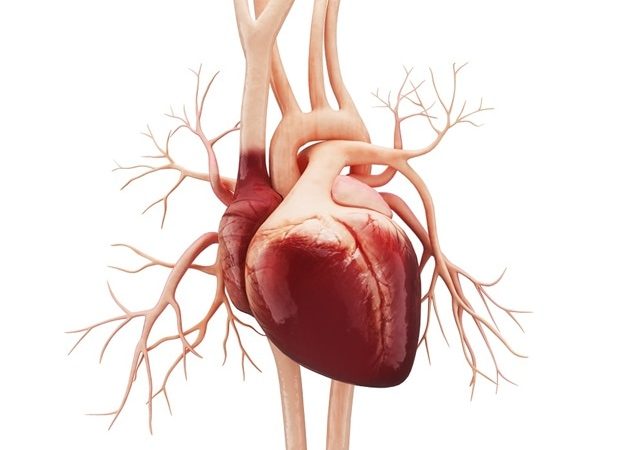• Today’s decision from the Medicines and Healthcare products Regulatory Agency (MHRA) marks the approval of dapagliflozin for the treatment of symptomatic chronic heart failure (HF) and left ventricular ejection fraction (LVEF) >40%, including HF with mildly reduced ejection fraction (HFmrEF) and preserved ejection fraction (HFpEF).1
• This decision is based on positive data from the DELIVER Phase III trial which showed that dapagliflozin reduced the composite outcome of cardiovascular (CV) death or worsening of HF by 18% vs placebo.2
• HF affects almost one million people in the UK, with approximately 270,000 undiagnosed.3
• Following this decision from the MHRA, a further 250,000 patients could now be eligible for treatment in England and Wales.4,5,6
London, UK, Monday 12 December 2022 – AstraZeneca today announced that the Medicines and Healthcare products Regulatory Agency (MHRA) has granted a licence extension for dapagliflozin in Great Britain for the treatment of symptomatic chronic heart failure (HF) in patients with HF and a left ventricular ejection fraction (LVEF) >40%, including HF with mildly reduced ejection fraction (HFmrEF) and preserved ejection fraction (HFpEF). This decision means that dapagliflozin is now approved for patients with symptomatic chronic HF across the full spectrum of left ventricular ejection fraction (LVEF), including HF with reduced, mildly reduced, and preserved ejection fraction (HFrEF, HFmrEF, HFpEF).1
HF is a life-threatening chronic disease in which the heart cannot pump enough blood around the body, affecting almost one million people in the UK, with approximately 270,000 living with the condition undiagnosed.3,7 There are three main categories of HF related to ejection fraction (EF), a measurement of the percentage of blood leaving the heart each time it contracts, including: HFrEF (LVEF less than or equal to 40%), HFmrEF (LVEF 41-49%) and HFpEF (LVEF greater than or equal to 50%).7 Approximately 59% of all HF patients have mildly reduced or preserved EF with few therapeutic options available.4 Dapagliflozin is already approved in Great Britain for the treatment of insufficiently controlled type 2 diabetes (T2D), symptomatic chronic HFrEF and chronic kidney disease (CKD).1
John McMurray, MD, Cardiovascular Research Centre, Institute of Cardiovascular and Medical Sciences, University of Glasgow, UK, said: “Today’s approval from the MHRA is a significant moment for patients living with heart failure in Great Britain, particularly for those with a preserved ejection fraction, who until now, have had few treatment options. Dapagliflozin has been clinically shown to reduce hospitalisations and cardiovascular deaths in heart failure and as a clinician, I’m pleased to see this decision that will bring us closer to addressing the full spectrum of heart failure and reducing the significant disease burden in Great Britain.”
The decision from the MHRA was based on results from the DELIVER Phase III trial, which showed that dapagliflozin met its primary endpoint in reducing the composite outcome of cardiovascular (CV) death or worsening HF by 18% (16.4% in the dapagliflozin group and 19.5% in the placebo group over a median follow-up of 2.3 years [hazard ratio {HR} =0.82 {95% CI 0.73-0.92}; p<0.001, ARR 3.1%]). The treatment effect was consistent across the LVEF range, without evidence of attenuation of effect by LVEF.2
Additionally, the pre-specified, patient level, pooled analysis of the DELIVER and DAPA-HF Phase III trials demonstrated that dapagliflozin reduced the risk of CV death by 14% (HR = 0.86 [95% CI 0.76-0.97]; p=0.01, ARR 1.5%) over the median follow-up of 22 months, death from any cause by 10% (HR = 0.90 [95% CI 0.82-0.99]; p=0.03, ARR 1.5%), total (first and repeat) hospitalisation for HF by 29% (rate ratio [RR] = 0.71 [95% CI 0.65-0.78]; p<0.001, ARR 6%) and the composite of death from CV causes, myocardial infarction, or stroke by 10% (HR = 0.90 [95% CI 0.81-1.00]; p=0.045, ARR 1.3%) in patients with HF irrespective of LVEF.8
Ed Piper, Medical and Scientific Affairs Director, AstraZeneca UK, said: “We’re delighted that the MHRA has authorised dapagliflozin for use in heart failure with preserved ejection fraction. We continue to work with NICE and the SMC to ensure that patients living with heart failure can access dapagliflozin as quickly as possible. Today’s milestone demonstrates AstraZeneca’s commitment to deliver effective medicines that improve outcomes for patients across the full spectrum of heart failure.”
In the DELIVER Phase III trial, data was only collected on serious adverse events (AEs) that led to discontinuation of dapagliflozin or placebo and other select AEs, as a result of the extensive safety data on dapagliflozin and established safety profile. Overall, serious AEs, including death, were reported in 43.5% of patients (n=1361) in the dapagliflozin group and in 45.5% of patients (n=1423) in the placebo group. AEs that led to discontinuation of dapagliflozin or placebo were reported in 5.8% of patients (n=182) in the dapagliflozin group and in 5.8% of patients (n=181) in the placebo group.2
References
1. Electronic Medicines Compendium (EMC). Forxiga 10 mg film-coated tablets. Summary of Product Characteristics (SmPC). Available at: https://www.medicines.org.uk/emc/product/7607/smpc#gref. Last accessed December 2022.
2. Solomon SD, McMurray JJV, Claggett B, et al. Dapagliflozin in Heart Failure with Mildly Reduced or Preserved Ejection Fraction. N Engl J Med. 2022;387:1089-1098.
3. British Heart Foundation. UK Factsheet. Available at: https://d1qotm6w854ck0.cloudfront.net/Uploads/a/f/a/bhfcvdstatisticsukfactsheet1_343908.pdf. Last accessed: December 2022.
4. AstraZeneca UK Ltd. Data on File. ID:REF-155912 July 2022.
5. Office for National Statistics (ONS). Mid-Year Population Estimates, UK, June 2020. Available at: https://www.ons.gov.uk/file?uri=/peoplepopulationandcommunity/populationandmigration/populationestimates/datasets/populationestimatesforukenglandandwalesscotlandandnorthernireland/mid2020/ukpopestimatesmid2020on2021geography.xls. Last accessed December 2022.
6. NHS Digital. Quality and Outcomes Framework 2020-21. Available at: https://files.digital.nhs.uk/E7/790861/qof-2021-prev-ach-pca-reg-nat-v2.xlsx . Last accessed December 2022.
7. Dunlay SM, et al. Epidemiology of heart failure with preserved ejection fraction. Nat Rev Cardiol. 2017;14:591–602.
8. Jhund, P.S., Kondo, T., Butt, J.H. et al. Dapagliflozin across the range of ejection fraction in patients with heart failure: a patient-level, pooled meta-analysis of DAPA-HF and DELIVER. Nat Med. 2022;28:1956-1964.
